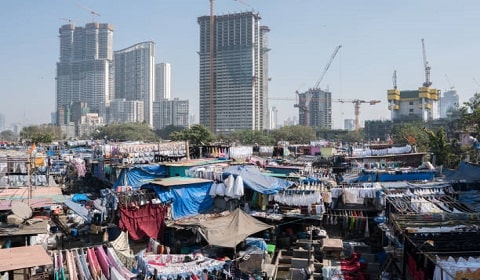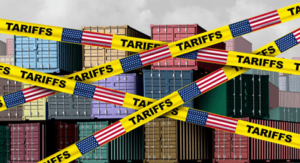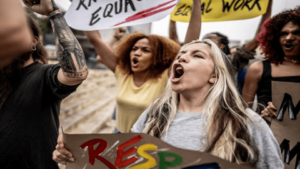
Income Inequality in India
Income inequality in India is a pervasive socio-economic challenge that underscores the stark disparities among its populace. As one of the world’s fastest-growing economies, India grapples with a widening chasm between the affluent and the marginalized. The distribution of wealth, opportunities, and resources remains vastly disproportionate, accentuating social stratification and hindering inclusive growth.
Factors such as unequal access to education, employment, and healthcare exacerbate this divide, impacting millions and impeding the nation’s path to holistic development. Understanding and addressing this complex issue are pivotal in fostering a more equitable and sustainable future for the diverse tapestry of India’s population.
Table of Contents
Income Inequality in India
India, a land of rich cultural diversity and economic dynamism, grapples with a persistent and concerning issue – income inequality. Income inequality in India, this multifaceted problem has deep-rooted causes and significant ramifications, as highlighted by various reports and studies over the years.
This complex issue intertwines with the nation’s socioeconomic fabric, hindering inclusive growth and perpetuating disparities. The stark contrast between the affluent and the marginalized underscores the urgency to address this disparity, ensuring equitable opportunities and sustainable economic development for all segments of society.
1. Consistent Income Disparity
Income inequality in India persistently endures despite shifting measurements. The State of Inequality in India Report (2022) noted reduced extreme poverty but exposed a harsh truth: the top 1% earns threefold more than the bottom 10%, with the top 10% claiming 32.52% of total income.
These figures highlight the alarming disparities in income inequality in India, emphasizing the widening chasm between economic classes. Such findings stress the urgency for equitable policies and interventions to bridge this gap, ensuring fairer distribution of resources and opportunities for all segments of society.
2. Rural-Urban Divide and Regional Disparities
The NFHS-V report reveals stark urban-rural disparities, portraying 54% of rural dwellers in the poorest quintiles versus 10.4% in urban regions. It magnifies income inequality in India, highlighting regional disparities, notably in the north and northeast, where wealth distribution lags.
States like Assam, Bihar, and Jharkhand depict higher populations in the lowest wealth quintiles, underscoring pervasive regional imbalances. This data underscores the pressing need for targeted interventions to bridge the rural-urban gap and address the pronounced disparities across different regions, emphasizing the urgency for inclusive policies that uplift marginalized communities and promote equitable development for all.
3. Global Recognition of Extreme Inequalities
The World Inequality Database (WID) Report 2021 singles out India for ‘extreme inequalities.’ Startling figures emerge: the top 10% commands 65% of household wealth, indicating profound income inequality in India, while the bottom 50% holds a mere 6%. These alarming statistics accentuate the country’s stark wealth disparities, magnifying the overall inequality gripping the nation.
Such pronounced divides raise urgent concerns, underscoring the pressing need for comprehensive measures to address systemic imbalances, promote inclusive economic policies, and pave the way for equitable wealth distribution, crucial steps toward mitigating the staggering income inequality prevalent across socioeconomic strata in India.
4. Factors Fuelling Inequality
Widening income disparities in India stem from various factors: low female labor force participation, stagnant job creation in transitioning sectors, and inadequate social service spending. This cocktail intensifies income inequality in India, with crucial areas like education witnessing declining proportions in overall expenditure, impacting accessibility.
Families face poverty due to out-of-pocket medical and education costs despite increased social service spending. This scenario underscores the urgent need for targeted interventions to bolster employment opportunities, prioritize comprehensive social service spending, and alleviate financial burdens. Addressing these issues is crucial in combating income inequality and fostering a more equitable society in India.
5. Challenges and the Way Forward
Marginalized communities, including scheduled tribes and castes, endure heightened poverty rates, further amplifying income inequality in India. Their low labor force participation and elevated unemployment rates compound the challenge of narrowing the income gap.
Addressing this requires governmental focus on enhancing employment opportunities, augmenting social service spending on health and education, and prioritizing the economic upliftment of marginalized groups.
Tackling income inequality in India necessitates comprehensive measures that uplift these communities, emphasizing the urgent need for concerted efforts to create a more inclusive and equitable society by bridging the economic disparities faced by these marginalized groups.
Conclusion
India’s journey toward economic growth has been marred by persistent income inequalities, posing significant challenges to socio-economic development. Recognizing and addressing the multifaceted reasons behind this disparity is imperative for the nation’s progress towards a more equitable and inclusive society.
Efforts aimed at creating opportunities, redistributing wealth, and prioritizing social welfare are critical to bridge the income divide and ensure a more prosperous future for all segments of society.







